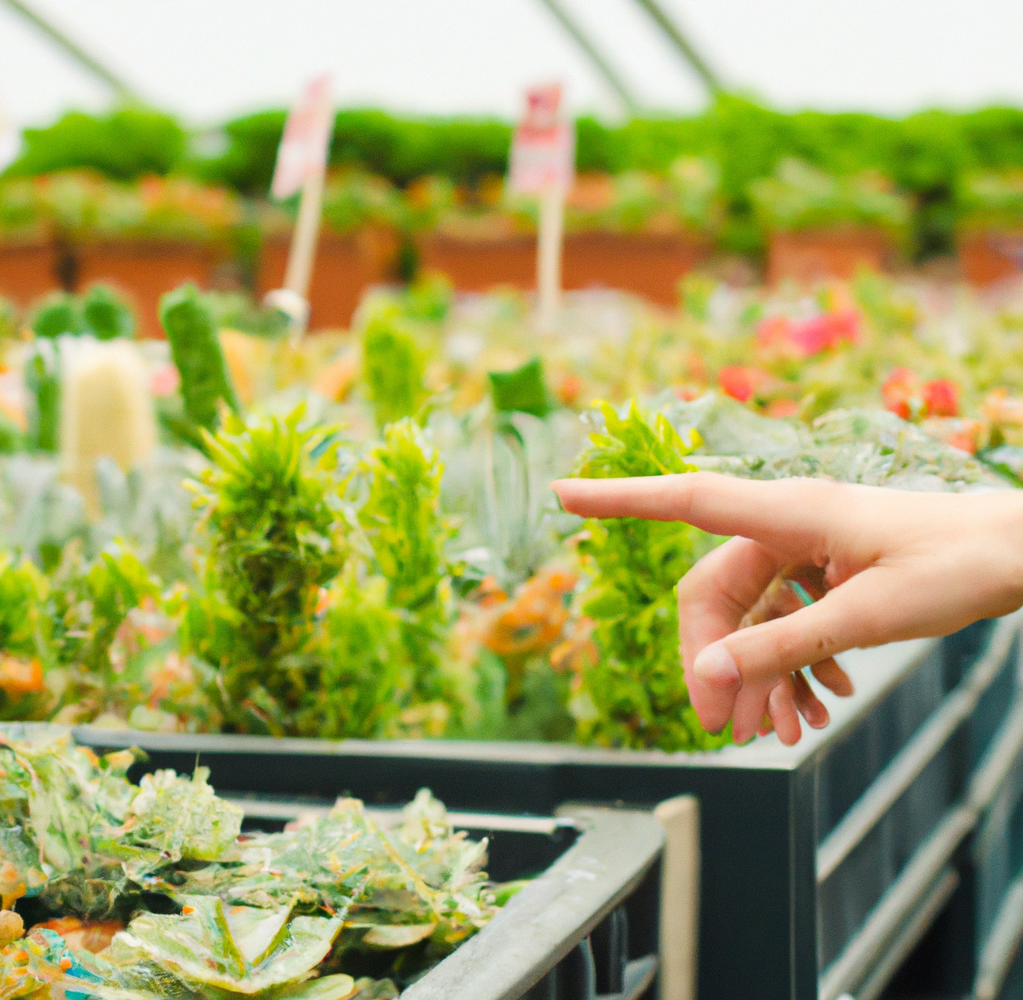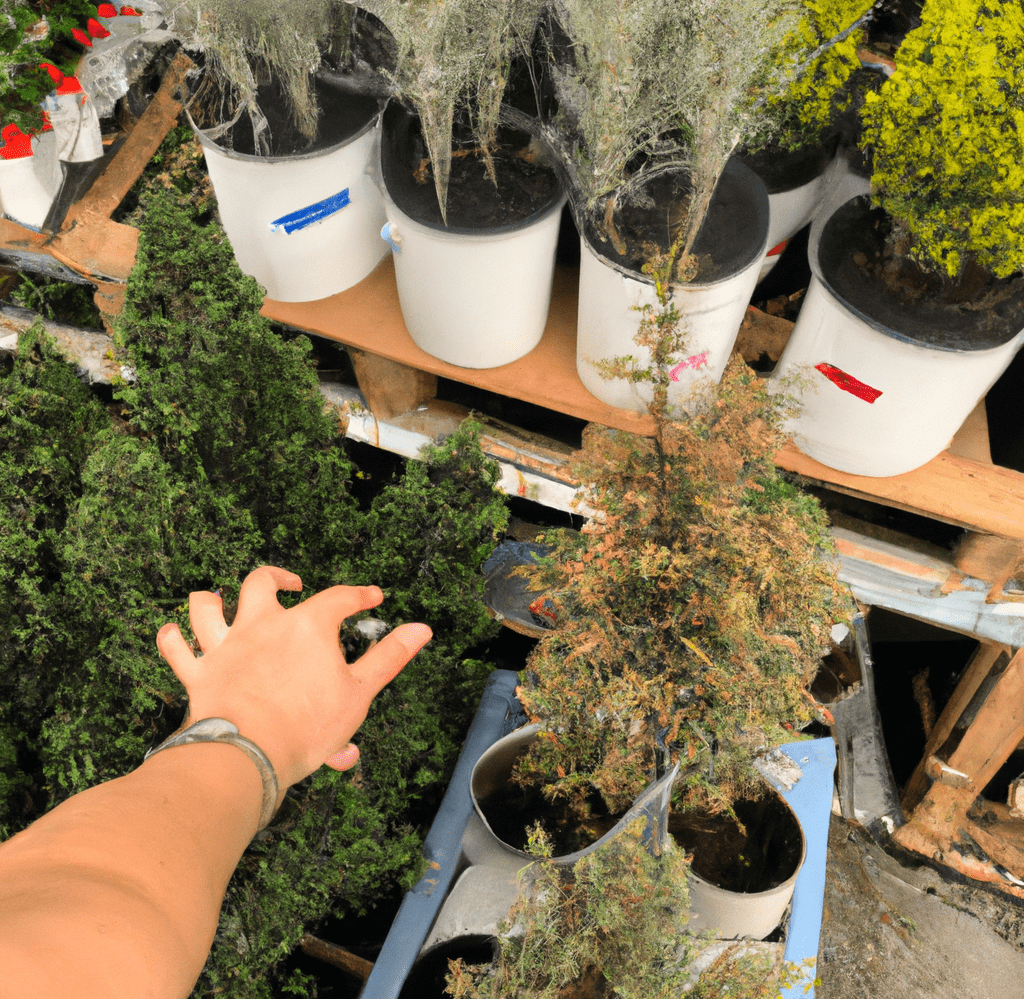The proper plants can improve the aesthetics and create a harmonious outdoor environment in a garden, which is a lovely and tranquil addition to any home. However, choosing the right plants for your garden is essential to your garden’s success. When selecting the plants that will thrive in your outdoor space whether its a big lawn or you’re learning how to start a garden in a townhouse, it’s crucial to take into account the individual growing circumstances in your garden, such as the type of soil, architecture, and general design. If you’re dealing with this problem, here’s our guide!

Factors to Consider When Choosing Plants
Several things need to be taken into account when choosing the right plants for your garden. They consist of the following:
- Season: Select plants whose blooms coincide with the time of year you wish to appreciate them.
- Color: Choose plants that will give your landscape your desired color scheme.
- Compatibility: Check the compatibility of the plants you select with the type of soil in your garden.
- Architecture: Think about how the plants will fit into the general architecture of your garden, taking into account their height and shape. This is landscaping 101!
- Shrubs: Shrubs are a minimal maintenance choice that will offer year-round greenery.
By taking these things into account, you can make sure that the plants you select will not only improve the appearance of your garden but also flourish in their particular growth environments.
Climate and Weather Conditions
The local climate and weather in your garden location can significantly impact the success of your plants. It’s crucial when choosing the right plants for your garden, to think about which ones will thrive in your area’s particular conditions, such as:
- Average Temperature: Take into account the local average temperature while choosing plants, and make sure they can withstand it.
- Rainfall: Consider the amount of rain that falls in your area and select plants that can survive there.
- Sunlight: The plants you select should withstand the amount of sunlight they will receive in your garden.
You may want to learn about what thrives in what season or how to winterize your garden if needed.
Soil Type and Quality
Your garden’s soil has a big influence on how well your plants do. It’s crucial to take the following factors into account while choosing the right plants for your garden:
- Determine the type of soil and its quality in your garden and select plants that work well there.
- Perform a test to identify whether the soil is acidic or alkaline, and then select plants that are suited to those circumstances.
- To avoid plant roots from becoming waterlogged, check that the soil in your garden has adequate drainage.

Sun Exposure
When choosing the right plants for your garden, the quantity of light exposure is an important consideration. When choosing plants that will thrive in your particular solar exposure conditions, garden design, and plant requirements need to be taken into consideration. In your garden, take into account both sunny and shaded places, and select plants that are suitable for the quantity of light they will receive.
Available Space
It’s crucial to take your available area into account while choosing the right plants for your garden. Think about the following:
- Garden area: When selecting plants, keep in mind the dimensions of your garden and how well they will fit there.
- Shade: When selecting plants for your garden, take into account how much shade there is there.
- Consider how much upkeep and attention you are willing to provide each of your plants, as some may need more than others.
Personal Preferences and Aesthetic Goals
When choosing the right plants for your garden, it’s crucial to take your aesthetic preferences and personal preferences into account. Think about the colors, textures, and shapes that appeal to you, then select plants that reflect those tastes. When selecting plants for your garden, in our experience, it’s best to keep the overall aesthetic you want to achieve in mind.
Types of Plants to Consider
Consider the kinds of plants that are most suited for the local growth conditions while choosing the right plants for your garden. Consider the following plant varieties:
- Site-specific plant: Pick native plants to your region because they are tailored to the local growing conditions and frequently need less upkeep.
- Healthy plant: To help ensure a healthy garden, look for low-maintenance, disease-resistant plants.
- Hydrangea: These well-liked and adaptable plants are available in a variety of hues and sizes, and they can provide a lovely touch to any garden.
You can make sure that your garden is aesthetically pleasing, low-maintenance, and healthy by thinking about various plant species.
Annuals vs. Perennials
It’s crucial to understand the distinction between annuals and perennials when choosing the right plants for your garden.
- Annuals: These plants produce a burst of color and go through their entire life cycle in one growing season.
- Perennials: These plants come back year after year, giving your garden design consistency and structure.
To ensure that the plants you choose will survive and thrive, be sure to learn about the specific growth conditions in your location.
Native vs. Non-native Plants
You can choose from both native and non-native plant varieties for your backyard.
- Native plants: These are the species of plants that are native to your region and have evolved to thrive in that environment, including the soil and climate.
- Non-native plants: These plants may need more care and attention to thrive because they are not native to your location so they might need more water or are able to survive a drought, unlike native plants.
Find out as much as you can about both native and non-native plants to make sure the ones you select will flourish in your garden but still tick off all other landscaping boxes.
Edible vs. Ornamental Plants
When choosing the right plants for your garden, take both edible and decorative possibilities into account.
- Plants that are edible can be planted for their fruits, vegetables, herbs, or nuts, giving your garden a practical edge.
- Ornamental plants, which can include shrubs, trees, and other kinds of plants, are produced for their aesthetic value, such as the beauty of their flowers, leaves, or bark.
Sure aesthetics are important but a garden that’s attractive and useful is great too!
Low-Maintenance vs. High-Maintenance Plants
Think about how much upkeep certain plant varieties take when selecting plants for your garden.
- Low-maintenance plants: These plants need little care and attention, making them an ideal choice for time-constrained or busy gardeners.
- High-maintenance plants: To preserve their health and attractiveness, some plants need extra care and attention, such as routine pruning or fertilizer.
Both kinds of plants can add beauty to a garden, but pick the one that fits your needs and resources the best.
How to Select Plants
Choosing the right plants for your garden is tough, here’s how to do it:
Research and Gather Information on Different Plant Options
It’s crucial to study and compile data on many possibilities before selecting plants for your yard. This includes taking into account each plant’s particular needs in terms of soil type, sunlight exposure, and growth habits. Consider the plant’s color, scent, and whether it will develop into a tree, shrub, or herb as well as the season in which it will bloom. Making an educated choice on the plants that will best suit the particular growing circumstances and preferences of your garden requires research and information collecting.
Visit Local Nurseries and Botanical Gardens for Inspiration and Advice
When selecting plants for your yard, local nurseries and botanical gardens can be a great source of ideas and guidance. Knowing how plants will grow, bloom, and appear in various climates, seasons, and soil types may help you predict how well they will do in your own garden. The employees at nurseries and botanical gardens are frequently educated about the plants they sell and can offer helpful guidance on the best selections for your unique growing conditions and design objectives. They may also help you choose plants that blend in with your home’s architecture and the general design of your garden or lawn area. Otherwise, look for a website or articles on the specific plants you want to learn about!
Take Note of Successful Plantings in Similar Growing Conditions
It’s beneficial to keep track of successful plantings in the different growth circumstances when selecting plants for your garden. In this gardening guide, you’ve learned that you can get a better idea of what plants will do well in your own garden by looking at which ones flourish in other gardens with comparable soil types, sun exposure, and climate. Additionally, this might assist you in avoiding a specific plant pest or insect and disease that are widespread in the region. Visit local parks, gardens, and other public green areas, and take note of any plants that pique your interest or appear to be flourishing. This knowledge, along with research and expert guidance, can help direct your plant-choosing procedure and improve your chances of developing a stunning and healthy garden.
Bottom Line: Choosing the Right Plants for Your Garden
The success and beauty of your garden depend on the plants you choose. You can choose plants that will flourish in your particular growing conditions by taking into account factors like climate and weather conditions, soil type and quality, sun exposure, available space, personal preferences, and aesthetic goals, types of plants, annuals vs. perennials, native vs. non-native plants, low-maintenance vs. high-maintenance plants, and more. Don’t forget to study, gather data, visit nearby nurseries and botanical gardens, and observe successful plantings in comparable environments. You may construct a beautiful, flourishing garden that provides you joy for many years by giving it considerable thought and preparation.
Choosing the Right Plants for Your Garden FAQs
What factors should I take into account when choosing the right plants for my garden?
You should think about the season, color, compatibility with the type of soil in your garden, architecture, shrubs, local climate and weather conditions, soil type and quality, sun exposure, available space, individual preferences and aesthetic goals, and types of plants available before sowing any plant.
How do climate and weather conditions affect my plants’ ability to thrive?
The weather and local climate where your garden’s located can have a big impact on how well your plants do. Make sure to choose plants that can flourish in the specific conditions of your area, such as the average local temperature, rainfall, and quantity of sunlight they’ll receive.
What aspects of the soil in my garden should I take into account when selecting plants?
Think about the type of soil you have, its quality, pH, and drainage when choosing plants for your garden.
How much room should I take into account while selecting plants for my garden?
If you’re into landscaping, think about the available space, the size of your garden, and the quantity of shade while selecting plants for your garden. Some of your plants may demand more care and attention than others.
What aesthetic objectives and personal preferences should I consider while selecting plants for my garden?
Think about your favorite colors, textures, and shapes then choose the plants that fit in those categories.
What kinds of plants must I take into consideration for my garden?
Considerite-specific plants, healthy plants, and hydrangeas, that are best suited for the regional growing conditions. Additionally, you have a choice of native and non-native plant kinds.
How should I choose plants for my garden between annuals and perennials?
Perennials grow year after year, but annuals produce a burst of color and complete their life cycle in one growing season.







